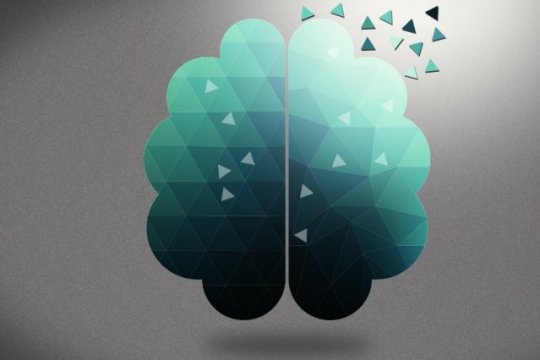I et studie som er blevet udgivet idag i journalen Science, visser forskere ved MIT at de var istand til at genaktivere hukommelser som ikke kunne på anden måde kunne genkaldes, ved hjælp af en teknologi som er kendt under navnet optogenetics.
Fundet besvarer et heftigt debateret spørgsmål indenfor neurovidenskaben, ifølge Susumu Tonegawa, Picower Professor hos MIT's Department of Biology og direktør for RIKEN-MIT Center ved Picower Institute for Learning and Memory, som ledte forskningen med ledende forfattere Tomas Ryan, Dheeraj Roy, og Michelle Pignatelli.
Neurosvidenskabelige forskere har i mange år debateret om retrograde amnesi - som følger efter traumatisk skade, stress, eller sygdomme såsom Alzheimers - er forårsaget af skade til specifikke hjerneceller, med det til følge at hukommelsen ikke kan genskabes, eller om adgangen til hukommelsen på en eller anden måde er blokeret, og derved forhindrer dets genkaldelse.
"Størstedelen af forskere har været for opbevaringteorien, men vi har vist i dette studie at denne teori som hovedparten støtter muligvis er forkert," siger Tonegawa. Amnesi er et problem med forringelse af genkaldelsesevnen."
Kommentar: Vi undskylder at vi ikke er istand til at oversætte hele artiklen, men vi grundet vores lille stab af og til ty til blot delvist at oversætte artikler.
Memory researchers have previously speculated that somewhere in the brain network is a population of neurons that are activated during the process of acquiring a memory, causing enduring physical or chemical changes.
If these groups of neurons are subsequently reactivated by a trigger such as a particular sight or smell, for example, the entire memory is recalled. These neurons are known as "memory engram cells."
Shedding light
In 2012 Tonegawa's group used optogenetics -- in which proteins are added to neurons to allow them to be activated with light -- to demonstrate for the first time that such a population of neurons does indeed exist in an area of the brain called the hippocampus.
However, until now no one has been able to show that these groups of neurons do undergo enduring chemical changes, in a process known as memory consolidation. One such change, known as "long-term potentiation" (LTP), involves the strengthening of synapses, the structures that allow groups of neurons to send signals to each other, as a result of learning and experience.
To find out if these chemical changes do indeed take place, the researchers first identified a group of engram cells in the hippocampus that, when activated using optogenetic tools, were able to express a memory.
When they then recorded the activity of this particular group of cells, they found that the synapses connecting them had been strengthened. "We were able to demonstrate for the first time that these specific cells -- a small group of cells in the hippocampus -- had undergone this augmentation of synaptic strength," Tonegawa says.
The researchers then attempted to discover what happens to memories without this consolidation process. By administering a compound called anisomycin, which blocks protein synthesis within neurons, immediately after mice had formed a new memory, the researchers were able to prevent the synapses from strengthening.
When they returned one day later and attempted to reactivate the memory using an emotional trigger, they could find no trace of it. "So even though the engram cells are there, without protein synthesis those cell synapses are not strengthened, and the memory is lost," Tonegawa says.
But startlingly, when the researchers then reactivated the protein synthesis-blocked engram cells using optogenetic tools, they found that the mice exhibited all the signs of recalling the memory in full.
"If you test memory recall with natural recall triggers in an anisomycin-treated animal, it will be amnesiac, you cannot induce memory recall," Tonegawa says. "But if you go directly to the putative engram-bearing cells and activate them with light, you can restore the memory, despite the fact that there has been no LTP."
"Groundbreaking paper"
Further studies carried out by Tonegawa's group demonstrated that memories are stored not in synapses strengthened by protein synthesis in individual engram cells, but in a circuit, or "pathway" of multiple groups of engram cells and the connections between them.
"We are proposing a new concept, in which there is an engram cell ensemble pathway, or circuit, for each memory," he says. "This circuit encompasses multiple brain areas and the engram cell ensembles in these areas are connected specifically for a particular memory."
The research dissociates the mechanisms used in memory storage from those of memory retrieval, according to Ryan. "The strengthening of engram synapses is crucial for the brain's ability to access or retrieve those specific memories, while the connectivity pathways between engram cells allows the encoding and storage of the memory information itself," he says.
Changes in synaptic strength and in spine properties have long been associated with learning and memory, according to Alcino Silva, director of the Integrative Center for Learning and Memory at the University of California at Los Angeles. "This groundbreaking paper suggests that these changes may not be as critical for memory as once thought, since under certain conditions, it seems to be possible to disrupt these changes and still preserve memory," he says. "Instead, it appears that these changes may be needed for memory retrieval, a mysterious process that has so far evaded neuroscientists."
Story Source:
The above story is based on materials provided by Massachusetts Institute of Technology. The original article was written by Helen Knight. Note: Materials may be edited for content and length.
Journal Reference:
- Tomás J. Ryan, Dheeraj S. Roy, Michele Pignatelli, Autumn Arons, and Susumu Tonegawa. Engram cells retain memory under retrograde amnesia. Science, 29 May 2015: 1007-1013 DOI: 10.1126/science.aaa5542




Læserkommentarer
dig vores Nyhedsbrev